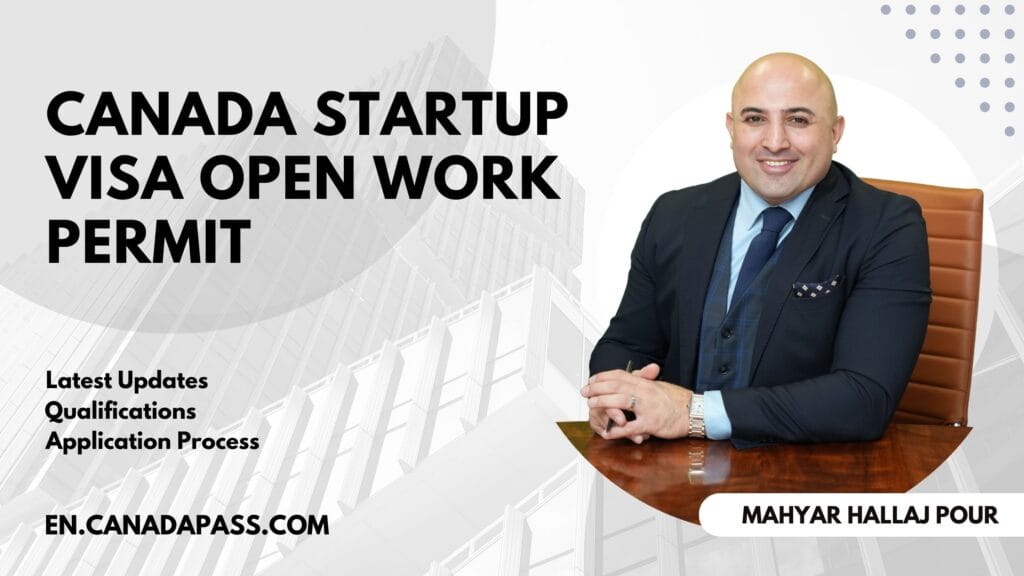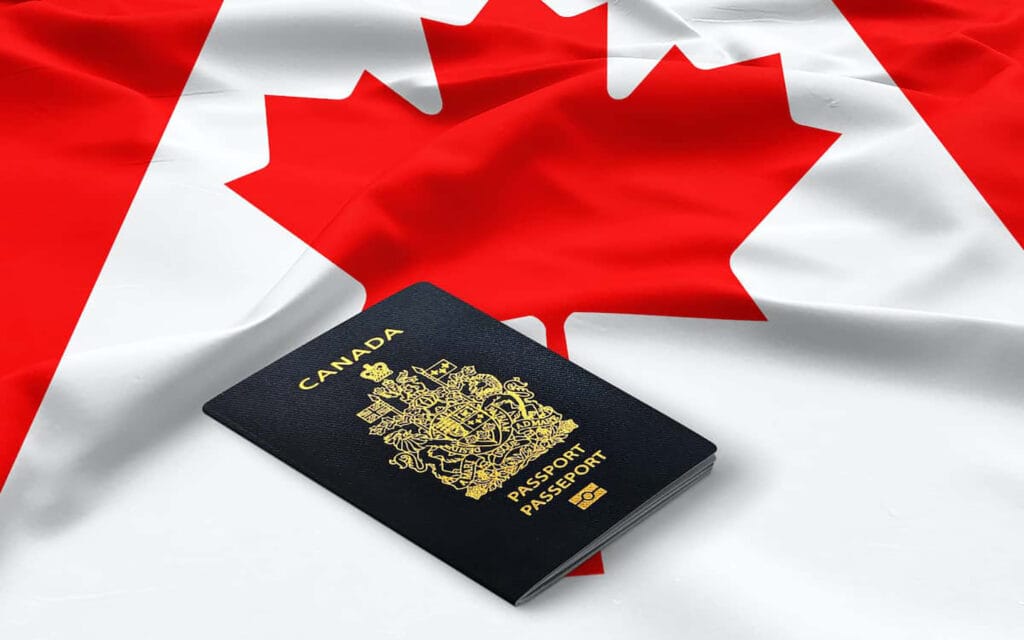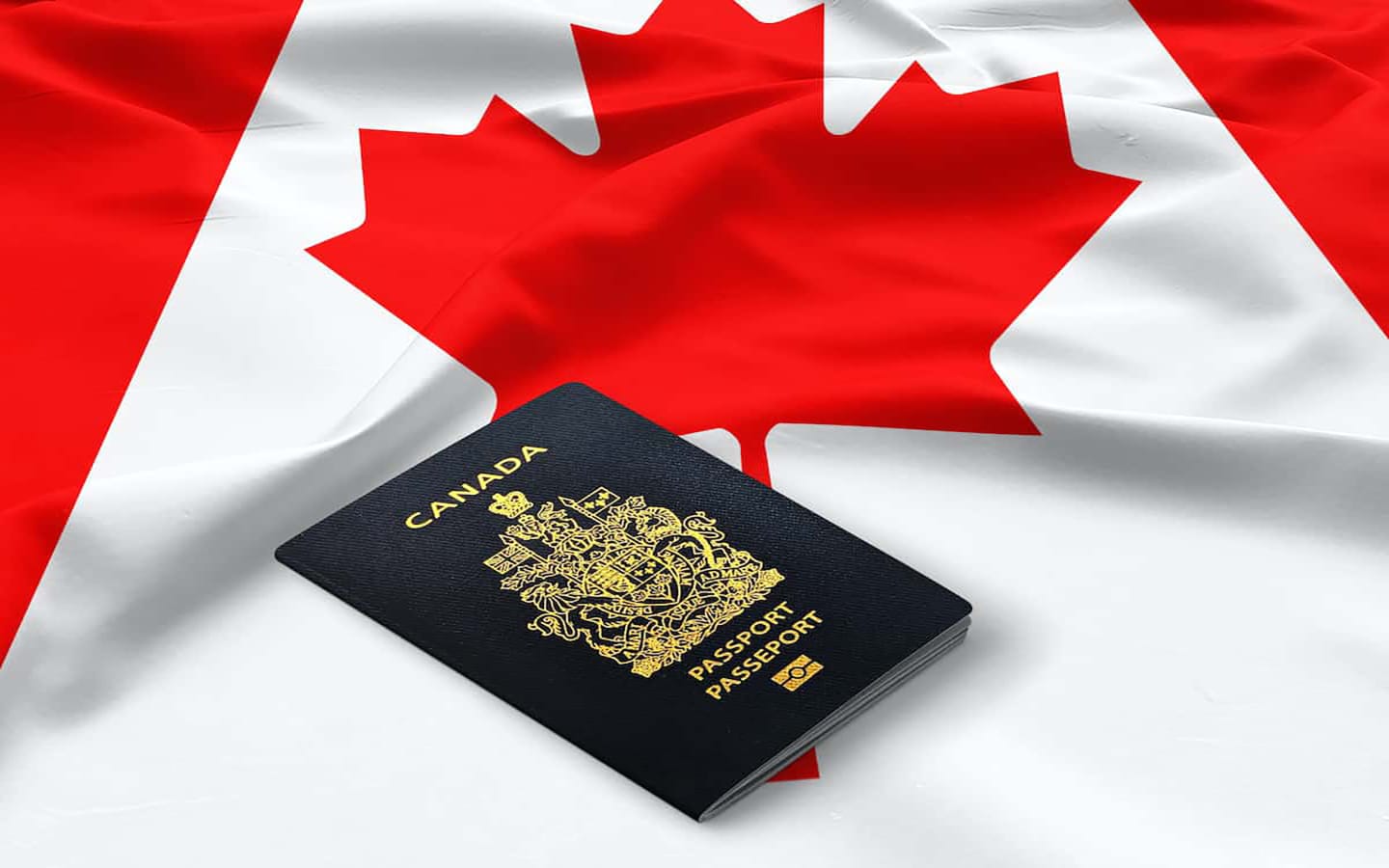If you’re dreaming of working in Canada and want a faster, LMIA-exempt route, the International Mobility Program (IMP) could be your ideal opportunity. Designed to support Canada’s broader economic and cultural interests, the IMP allows eligible foreign nationals to work in Canada through employer-specific or work permit, without the lengthy Labour Market Impact Assessment (LMIA) process.
This guide outlines the International Mobility Program process step by step. This breakdown will help you understand the required documentation, process steps, and key actions needed for the correct application.
Understanding the International Mobility Program
The International Mobility Program (IMP) is designed to facilitate the global movement of talent while supporting Canada’s economic growth and cultural diversity. Unlike the Temporary Foreign Worker Program (TFWP), the IMP allows employers to hire temporary foreign workers without needing a Labour Market Impact Assessment (LMIA). This streamlined approach offers a faster, more flexible hiring process, benefiting both Canadian employers and international workers.
Step 1: Confirm Your IMP Eligibility
For Employers
- To hire a temporary foreign worker under the International Mobility Program, employers must ensure they meet all IMP requirements.
- Review LMIA-exemption categories (e.g., trade agreements, intra-company transfers, Francophone Mobility) to confirm their job offer qualifies under IMP.
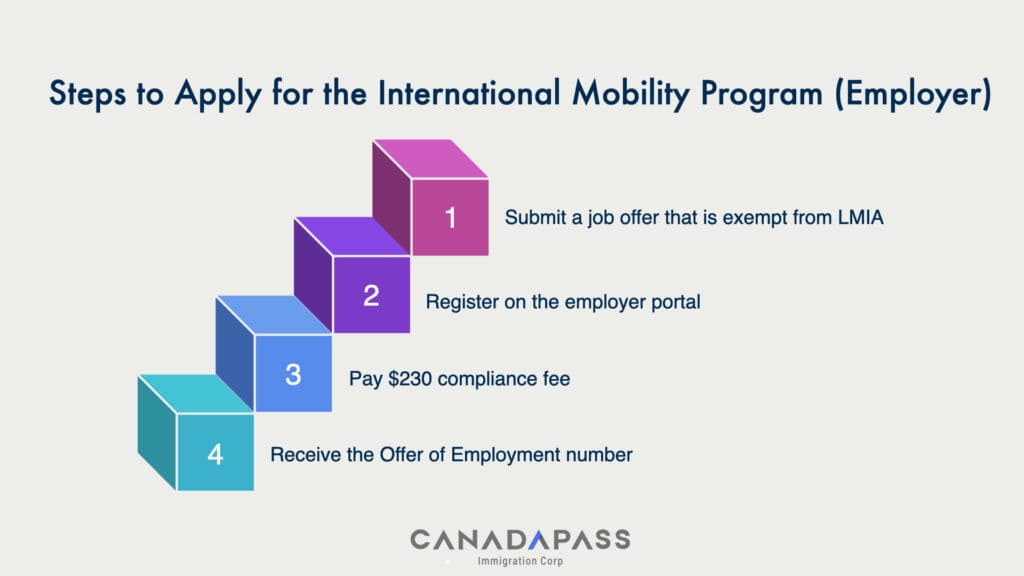
For Workers
To determine whether you can apply under the International Mobility Program (IMP) without a Labour Market Impact Assessment (LMIA), consult the official list of LMIA-exempt job categories and exemption codes. These exemptions include roles based on broad economic, cultural, or reciprocal benefits to Canada.
Step 2: Employer’s Role in the Application Process
Submitting an LMIA-Exempt Job Offer
1. Employer Portal: They must sign in or register in the Employer Portal, complete the Offer Form, and provide details about their business, the foreign worker, job title, duties, and wage/benefits.
2. Pay fee: They must pay the $230 compliance fee (when applicable). Canadian employers don’t need to pay a fee for Francophone Mobility (outside Quebec), Innovation stream, overnight camp counsellors, or holders open work permit.
3. Receive the Offer of Employment Number: After submission, employers will receive a 7-digit offer number. They must provide this number to their worker to apply for a work permit.
Step 3: Worker’s Role in the Application Process
Here’s how you, the worker, contribute to the International Mobility Program (IMP) application:
1. Receive your Offer of Employment number
Once your employer creates and submits your job offer via the Employer Portal, they’ll receive a unique 7-digit Offer of Employment number. They must provide you with this number; it’s essential for your work permit application.
2. Apply for your work permit
You can use your Offer of Employment number when you complete your online application:
- If you’re applying online from outside Canada, IRCC will review your eligibility. If approved, you’ll get a port of entry letter of introduction and be issued your work permit when you arrive.
- If you’re inside Canada or applying to extend your permit, you’ll receive the work permit by mail if approved, no letter of introduction required.
3. Ensure you have the correct entry documents
Before you travel to Canada, confirm if you need:
- A visitor visa or an Electronic Travel Authorization (eTA);
- A biometrics appointment, if required;
- A medical exam, depending on your job and past residence
Step 4: Tips for a Successful Submission
Here are some top strategies to ensure a strong application under Canada’s International Mobility Program (IMP) in 2025:
1. Select the Right IMP Stream and Connect with Employer
- Identify the appropriate IMP stream, Global Skills, Francophone Mobility, CUSMA, intra-company transfer, etc., to benefit from the LMIA exemption.
- Work closely with your employer, as they need to submit the offer via the Employer Portal and pay the $ 230 compliance fee.
2. Submit Complete and Accurate Applications
- Include the 7-digit Offer of Employment number in your application.
- Ensure your documents, passport, credentials, and proof of LMIA exemption are up-to-date.
- Incomplete or unclear information can cause delays or rejection.
3. Respect Timelines and Maintain Legal Status
- Apply before your current permit expires, and aim to meet IRCC’s service standards, especially when applying from inside Canada.
- If eligible, consider port of entry applications or online applications abroad for faster processing.
- Keep track of processing times in your IRCC account
Step 5: Await a Decision
After you’ve submitted your work permit application, including your Offer of Employment number, proof of employer compliance, and all supporting documents, here’s what happens next:
1. IRCC Processes the Application
- IRCC reviews your complete application.
- For high‑skill streams (like Global Skills Strategy under IMP), IRCC wants to process online applications in about 2 weeks.
2. Local Visa Office Review
- If you’re applying from abroad, your local Canadian visa office may require additional documents, such as police certificates, biometrics, or medical exams.
3. Final Decision by Port of Entry or Visa Officer
- Applying from outside Canada: Once IRCC approves your application, you’ll receive a Port of Entry (POE) Letter of Introduction. This letter officially allows you to receive your work permit when arriving at a Canadian border services officer (PSO).
- Applying inside Canada: IRCC will mail your work permit directly to your Canadian address once approved.
4. Border Services Officer’s Final Assessment
- For those entering Canada, the PSO at the port of entry makes the final decision on both admissibility and any necessary LMIA/work‑permit exemption.
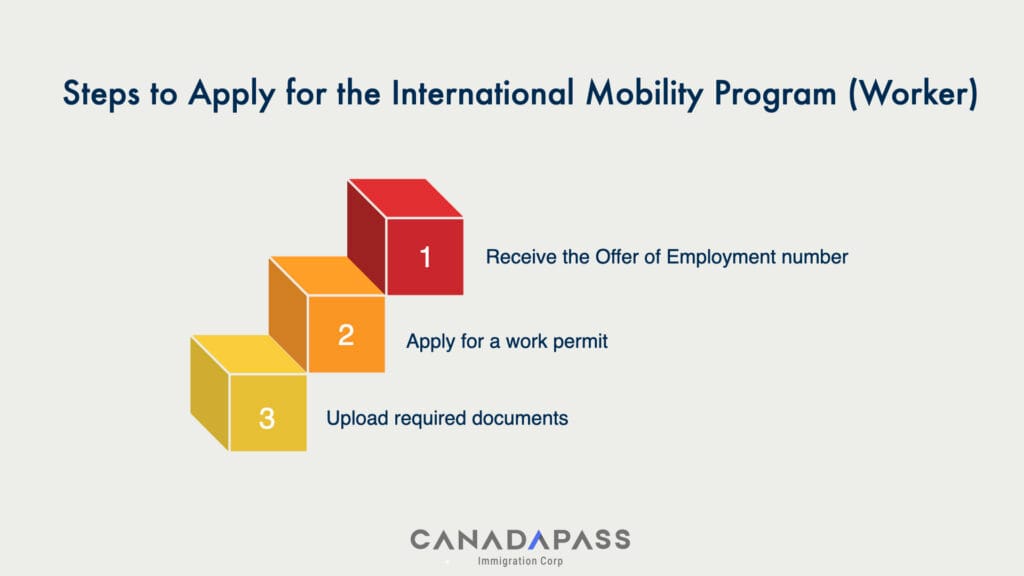
Recent Updates to the IMP Application Process (2025)
1. Adjusting Temporary Resident Volume Targets
- Under the 2025–27 Immigration Levels Plan, IMP entries are capped at 285,750 in 2025, significantly lower than other temporary resident streams.
2. Focus on Processing Efficiency Through Categorical Portals
- IRCC continues to streamline processing for certain IMP streams, particularly within the high‑skill Global Skills Strategy, maintaining its two‑week target for eligible applications.
- Expect additional online portal improvements and AI-enhanced reviews, supporting quicker and more transparent processing
Benefits of the International Mobility Program
1. Faster Work Permit Processing: IMP streams are exempt from the Labour Market Impact Assessment (LMIA), allowing for faster application processing. Some eligible applicants benefit from a 2-week processing time under Canada’s Global Skills Strategy.
2. Open Work Permits: Certain IMP categories (e.g., Post-Graduation Work Permit, Spouse of Skilled Worker) provide open work permits, meaning you can work for any employer in Canada.
3. Pathway to Permanent Residency: IMP work experience can help workers qualify for permanent residence through programs such as Canadian Experience Class (CEC), Provincial Nominee Programs (PNPs), and Express Entry.
4. No LMIA Requirement: LMIA can be a lengthy and complex process. Being LMIA-exempt under IMP allows workers to skip this step, avoiding delays and costs.
5. Family Accompaniment: Spouses and dependent children can often accompany the worker. Spouses may qualify for an open work permit, and children can attend school in most provinces.
6. Gain Canadian Work Experience: Canadian work experience is highly valued by employers and immigration programs. It can enhance future employment and immigration opportunities.
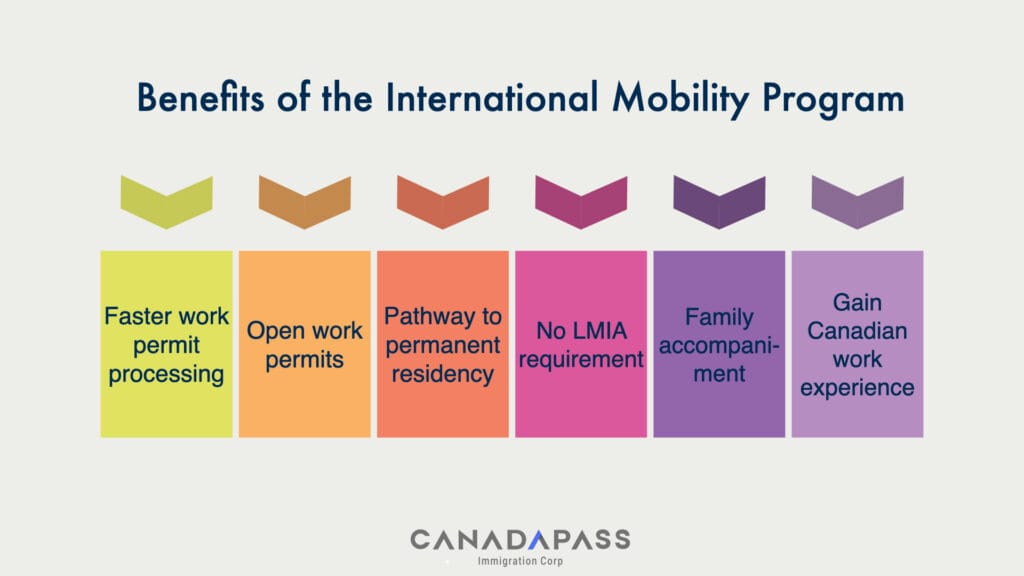
Start your journey with confidence
The International Mobility Program process offers exciting opportunities for living and working in Canada. However, understanding the program’s requirements, paperwork, and application steps can be difficult without expert help.
If you want to get Canada permanent residency under the the International Mobility Program, take the first step today to find your eligibility through a free CanadaPass assessment form. Our experts provide specific and useful services and consultations to help you achieve a successful immigration journey to Canada.




